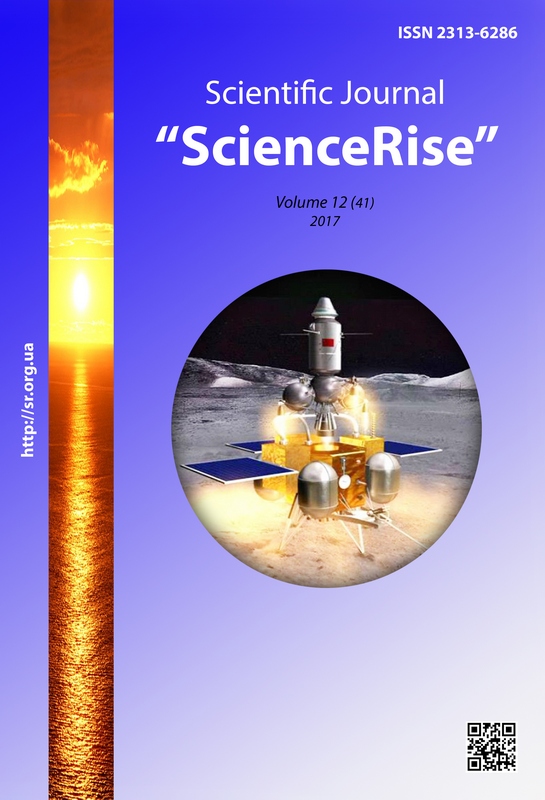Способ преобразования множества возможных решений в теории принятия решений
DOI:
https://doi.org/10.15587/2313-8416.2017.118284Ключові слова:
теория принятия решений, многокритериальная задача, множество возможных решений, выпуклая оболочкаАнотація
Рассматривается задача многокритериального выбора, которая вначале сводится к однокритериальной, а затем – к задаче линейного программирования. Для эффективного решения задачи предлагается способ преобразования множества возможных решений (соответствующей области допустимых решений) путем исключения из рассмотрения заведомо неперспективных альтернатив с возможность дальнейшего их направленного перебора. Приводятся численные результаты работы алгоритма при наличии от трех до пяти критериев
Посилання
Poltavskiy, A. В., Semenov, S. S., Burba, A. A. (2014). Metody prinyatiya resheniy pri razrabotke obyektov slozhnykh tekhnicheskikh sistem [Methods of making the devlopment of objects complex technical systems]. Dual technologies, 3 (68), 38–46.
Optner, S. A. (1969). Sistemnyy analiz dlya resheniya delovykh i promyshlennykh problem [System analysis for solving business and industrial problems]. Moscow: Soviet radio, 216.
Samarskyi, A. A., Mihailov, A. P. (2001) Matematicheskoye modelirovaniye: Idei. Metody. Primery [Mathematical Modeling: Ideas. Methods. Examples]. Moscow: Fizmatlit, 320.
Urubkov, A. R., Fedotov, I. V. (2011). Metody i modeli optimizatsii upravlencheskikh resheniy [Methods and models for optimizing management decisions]. Moscow: Delo ANKH, 240.
Churakov, E. P. (2004). Matematicheskiye metody obrabotki eksperimental'nykh dannykh v ekonomike [Mathematical methods for processing experimental data in the economy]. Moscow: Finance and Statistics, 240.
Geoffrion, A. M., Dyer, J. S., Feinberg, A. (1972). An Interactive Approach for Multi-Criterion Optimization, with an Application to the Operation of an Academic Department. Management Science, 19 (4), 357–368. doi: 10.1287/mnsc.19.4.357
Rosenberg, R. (1967). Simulation of genetic populations with biochemical properties. Ann Arbor: University of Michigan.
Nogin, V. D. (2008). Problema suzheniya mnozhestva Pareto: podkhody k resheniyu [The problem of narrowing the Pareto set: approaches to solving]. Artificial Intelligence and Decision Making, 1, 98–112.
Sobol, S. M., Statnikov, R. B. (2006). Vybor optimal'nykh parametrov v zadachakh so mnogimi kriteriyami [The choice of optimal parameters in problems with many criteria]. Moscow: Drofa, 175.
McMullen, P., Shephard, G. (1971). Convex Polytopes and the Upper Bound Conjecture. Cambridge: Cambridge University Press.
Gil, N. I., Sofronova, M. S. (2009). Ob odnom podkhode k postroyeniyu vypukloy obolochki konechnogo mnozhestva tochek v Rn [On an approach to the construction of the convex hull of a finite set of points in Rn ]. Artificial intelligence, 4, 30–36.
##submission.downloads##
Опубліковано
Номер
Розділ
Ліцензія
Авторське право (c) 2017 Micola Pogozhikh, Marina Sofronova, Dmitry Panasenko

Ця робота ліцензується відповідно до Creative Commons Attribution 4.0 International License.
Наше видання використовує положення про авторські права Creative Commons CC BY для журналів відкритого доступу.
Автори, які публікуються у цьому журналі, погоджуються з наступними умовами:
1. Автори залишають за собою право на авторство своєї роботи та передають журналу право першої публікації цієї роботи на умовах ліцензії Creative Commons CC BY, котра дозволяє іншим особам вільно розповсюджувати опубліковану роботу з обов'язковим посиланням на авторів оригінальної роботи та першу публікацію роботи у цьому журналі.
2. Автори мають право укладати самостійні додаткові угоди щодо неексклюзивного розповсюдження роботи у тому вигляді, в якому вона була опублікована цим журналом (наприклад, розміщувати роботу в електронному сховищі установи або публікувати у складі монографії), за умови збереження посилання на першу публікацію роботи у цьому журналі.

